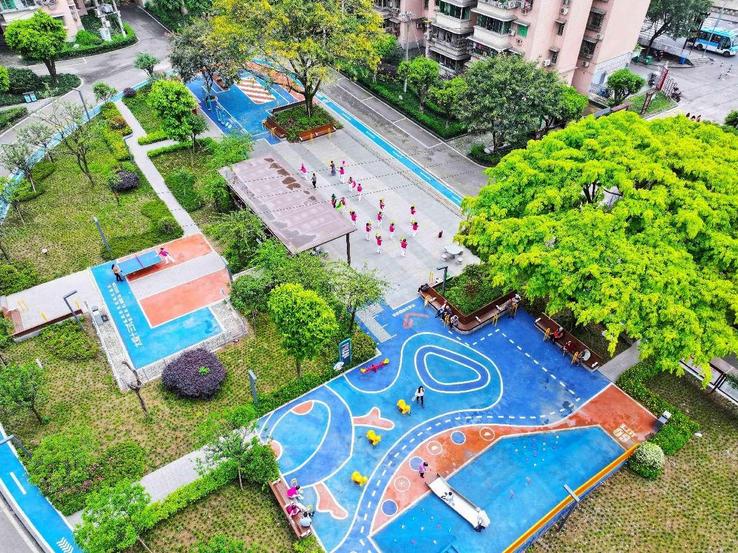China makes big strides in space breeding

Agency. After sowing seeds in early April, farmer Wang Tousheng from Bizhou township, Suichuan county, east China's Jiangxi province, would come to the paddy field every few days to check on the growth of the "space lotus".
"Space-traveled lotus seeds have unique qualities. With a yield of 1,000 kilograms and a gross income of 6,000 yuan ($828.95) per mu (one mu equals 0.07 hectares), it's truly a get-rich lotus." said Wang.
The "space lotus" Wang referred to is a product of aerospace breeding, known as the "Space Lotus No. 36." It has been planted on a total area of more than 20 million mu, accounting for over 80 percent of the total cultivation area of lotus seeds in China.
"In space breeding, also referred to as aerospace breeding, seeds are sent on a return capsule to space, where they are exposed to specific conditions such as cosmic radiation, microgravity, and high vacuum to induce genetic mutations. After the seeds return to the Earth, we pick out the beneficial mutations that can be inherited to breed new plant varieties with high quality, high yields, and multiple resistances," said Liu Luxiang, Party Secretary of the Institute of Crop Sciences under the Chinese Academy of Agricultural Sciences and chief scientist of China's space breeding program.
In August 1987, China's ninth recoverable satellite carried seeds of rice, chili pepper, and other crops into space, marking the first "space travel" of Chinese seeds. So far China has conducted over 3,000 experiments on space breeding, and developed more than 260 approved varieties of staple crops, over 100 new varieties of vegetables, fruits, forestry, and flowers.
Space breeding increased grain production by over 2 billion kilograms annually in China, and generated direct economic benefits exceeding 100 billion yuan ($13.82 billion), according to media reports.
At the China (Shouguang) International Vegetable Sci-Tech Fair in Shouguang, "China's Hometown of Vegetables" located in east China's Shandong province, the aviation breeding exhibition area of the Hall No. 10 showcases thriving tomatoes, eggplants, and chili peppers.
"Here you can find 13 new varieties that represent the achievements of China's space breeding. These varieties are characterized by their high yield, high quality, early maturity, and robust disease resistance," said Ma Zunjuan, manager of the exhibition hall.
Not every seed sent into space experiences a miraculous transformation. Even if they spend a week or 27 days at most in space, the chances of them changing are only a few thousandths or even ten thousandths.
"The overarching goal, whether through space breeding or alternative methods, is to generate and select mutations, and then make use of the mutation process. And the focus of breeding specialists is on developing space seeds for better yields, quality, and nutrition," Liu explained.
To cultivate a mature variety, it typically takes a minimum of 8 to 10 years. Throughout the lengthy breeding process, the seeds must undergo rigorous testing for yield, resistance, quality, and market value. The occurrence of a problem at any stage can potentially undo all previous efforts.
"A large number of strains are eliminated during tests, leaving only a very small proportion classified as space seeds, certified or acknowledged by professional institutions," Liu told People's Daily.
By employing space breeding technology, China has managed to produce a variety of high-yielding and high-quality new crop strains in rice, wheat, cotton, and vegetables.
For instance, II Youhang 1, a nationally accredited super hybrid rice variety, has made advancements in both yield and quality, setting and maintaining the world record for regenerated rice yield per 100 mu.
In 2021, Hangmai 802, a high-yielding and high-quality wheat variety, was certified in north China's Hebei province. It features outstanding salt tolerance, strong resistance to various diseases, and adaptability to diverse conditions. In 2022, Hangmai 106 was approved in northwest China's Xinjiang Uyghur autonomous region. In addition to strong resistance to powdery mildew, leaf rust, and stripe rust, it is also rich in dietary fiber.
The carrier of seed materials plays a key role in space breeding. In 2006, China established a national space breeding collaboration group, which worked with relevant parties to initiate the space breeding project. The first seed-breeding satellite, "Shijian-8," was launched as a result.
In 2024, the collaboration group is scheduled to collaborate with the China Academy of Space Technology to launch the second satellite dedicated to space breeding, as part of China's recoverable satellite project. Besides, China's research on space mutagenesis mechanisms has seen significant strides by using ground-based high-energy accelerators to simulate cosmic particles.
"The establishment of our space station marks the start of space breeding in space stations," said Liu. By developing extravehicular equipment and technology for space radiation biology, breeding experts can engage in space-induced mutagenesis breeding and thereby establish a new space breeding system based on the space station.
-By Chang Qin, People's Daily














प्रतिकृया दिनुहोस